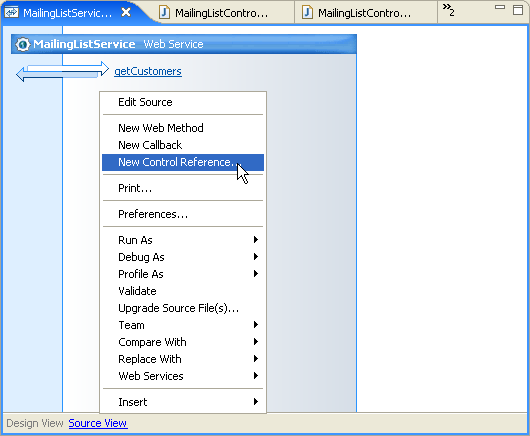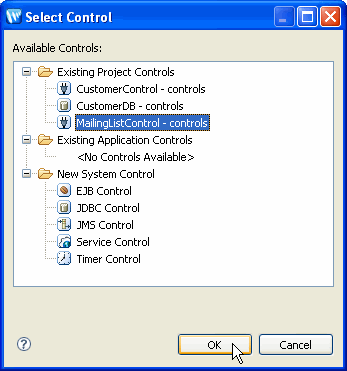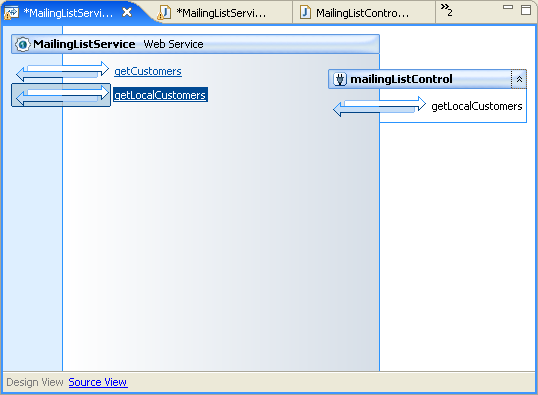Step 7: Use the Control from the Web Service
In this section, you will insert a method in the web service to call a method on the custom control.
Insert a Control
- In the Project Explorer, double-click the web service file ServicesWeb/Java Resources/src/services/MailingListService.java.
- Right-click in the Design View editor, then select New
Control Reference.

In the Select Control dialog, note that you can choose from various existing controls, including MailingListControl, the one you created earlier in the controls package.
- Select MailingListControl - controls,
then click OK.

- Press Ctrl+Shift+S to save your work.
In Design View, the web service should look like this:

The web service code in Source View should be as follows:
package services;
import javax.jws.*;
import org.apache.beehive.controls.api.bean.Control;
import controls.MailingListControl;
@WebService
public class MailingListService {
@Control
private MailingListControl mailingListControl;
@WebMethod
public String getCustomers() {
return "John Smith";
}
}
Note that Workshop added the required imports for MailingListControl. It also added a variable declaration for a control of type MailingListControl named mailingListControl. Workshop declared mailingListControl to be a control by adding the @Control annotation.
Call a Method on the Control
You will now add a method to the service that will call a method on mailingListControl, the instance of MailingListControl you just created.
- In Design View, right-click the control method getLocalCustomers
and select Generate Delegate Method.

A corresponding method is added to the web service client interface.

- Press Ctrl+Shift+S to save your work.
The source code for the web service class should now be as follows:
package services;
import javax.jws.*;
import org.apache.beehive.controls.api.bean.Control;
import controls.MailingListControl;
@WebService
public class MailingListService {
@Control
private MailingListControl mailingListControl;
@WebMethod()
public String getCustomers() {
return "John Smith";
}
@WebMethod
public model.Customer[] getLocalCustomers() {
return mailingListControl.getLocalCustomers();
}
}